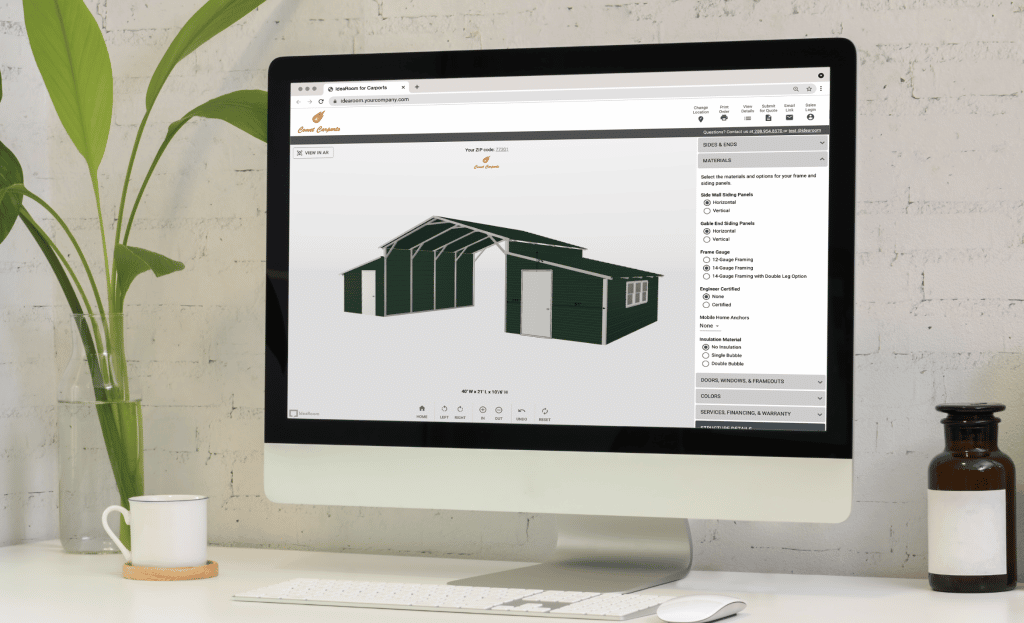In today’s world, eCommerce is a major industry, and buyers have more options than ever before. While this creates more opportunities for eCommerce companies, it also creates more competition. To stand out from the crowd, companies need to create a shopping experience that gives buyers confidence in their purchases. One way to do this is through the use of 3D product configurators. In this article, we will explore the ways in which 3D product configurators can increase buyer confidence in eCommerce.
Personalization: Making The Customer Feel Special
Personalization is a key component of the eCommerce experience, and a website product configurator is an excellent way to achieve this. With a 3D product configurator, buyers can create a product that is tailored to their specific needs and preferences. For example, if a buyer is looking for a new sofa, they can choose the fabric, color, and size of the sofa. By offering this level of personalization, the buyer feels more in control of the purchase process and is more likely to feel confident in their decision.
One company that has successfully implemented a 3D product configurator is Joybird, a furniture company that offers personalized furniture design. Joybird allows customers to choose from a wide range of fabrics, colors, and designs, and then see a 3D rendering of their chosen design.
Visualization: Seeing Is Believing
Another benefit of a 3D product configurator is improved visualization. Traditionally, buyers would need to rely on product images and descriptions to make their purchasing decisions. However, with a website product configurator, buyers can see a 3D rendering of their chosen design. This allows them to get a better sense of the product and how it will look in their space.
Nike is one of the companies that has had a successful implementation of a 3D product configurator for visualization. Nike’s website product configurator allows buyers to see a 3D rendering of their chosen shoe design, with the ability to rotate and zoom in on the shoe. Implementing visualization not only increases buyer confidence but also increases the likelihood of a purchase.
Interactivity: Engaging The Customer
Interactivity is an important aspect of the eCommerce experience, and a 3D product configurator is an excellent way to achieve this. With a website product configurator, buyers can interact with the product and make changes to it in real time. This not only makes the buying process more engaging but also allows buyers to experiment with different options and configurations.
A company that has effectively applied a 3D product configurator for interactivity is Volvo. Volvo’s website product configurator enables buyers to construct their ideal car in 3D and make changes to the exterior and interior of the car.
Ease Of Use: Making The Purchase Process Simple
Another benefit of a 3D product configurator is improved ease of use. With a website product configurator, the buying process is simplified, as buyers can configure their products without the need for extensive product knowledge or technical skills. This simplification of the buying process not only increases buyer confidence but also makes the purchase process more efficient.
Fender has executed a 3D product configurator for ease of use. Fender’s website product configurator lets buyers design their ideal guitar in 3D and also choose the body style, pickups, and color of the guitar. This level of ease of use not only improves confidence in buyers, but it also makes the buying process more efficient.
Increased Conversion Rates: Turning Browsers Into Buyers
Finally, a 3D product configurator can lead to increased conversion rates. When buyers are confident in their purchase, they are more likely to make a purchase. By using a 3D product configurator, eCommerce companies can create a shopping experience that inspires confidence in buyers and increases the likelihood of a purchase.
One company that has seen increased conversion rates due to its use of a 3D product configurator is Porsche. Porsche’s website product configurator lets buyers to configure their ideal car creating custom exterior, interior, and performance features of the car. By offering this unique service, Porsche has been able to increase buyer confidence and convert more browsers into buyers.
In conclusion, 3D product configurators offer numerous benefits for eCommerce companies, including increased buyer confidence and increased conversion rates. By offering personalization, improved visualization, interactivity, and ease of use, companies can create a shopping experience that inspires confidence in buyers and differentiates them from their competitors.
